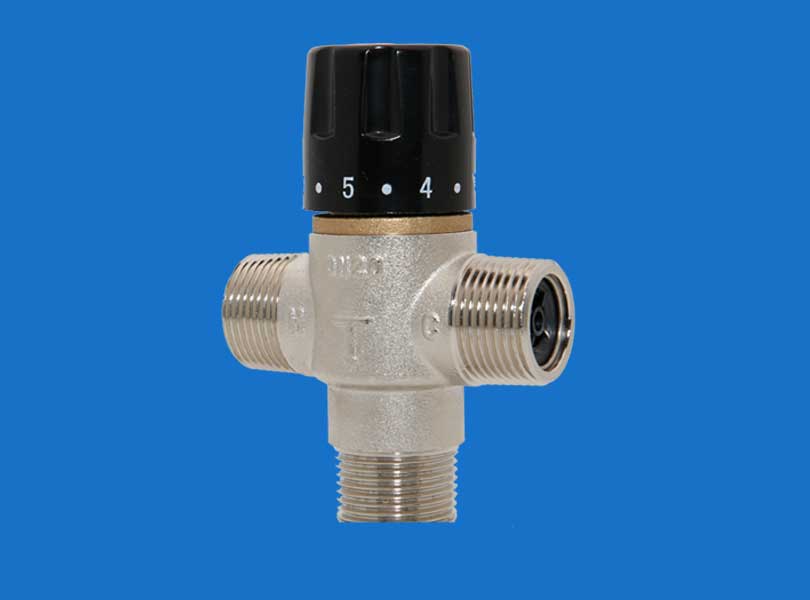
Thermostatic Mixing Valve

What is the thermostatic mixing valve?
A Thermostatic Mixing Valve is a valve that blends hot water (stored at temperatures high enough to kill bacteria) with cold water to ensure constant, safe outlet temperatures preventing scalding.
They shut-off rapidly in the event of a hot or cold supply failure to prevent scalding or thermal shock.
Thermostatic mixing valve accurately control water temperatures for bathing, showering and hand-washing. They maintain pre-set temperatures - even if water pressure varies when other appliances are used. Thermostatic mixing valve can be fitted under baths and basins, be part of shower fittings, or as a feature of exposed hot and cold water mixers.
Thermostatic mixing valve main technical data:
1. Working pressure 0.03-1Mpa
2. Ideal working pressure: 0.1-0.5Mpa
3. Maximum working temperature: below 99ºC
4. Hot water inlet temperature range: 50-99ºC
5. Cold water inlet temperature range: 5-29ºC
6. Outlet Temperature range: 35-55ºC
7. Adjustment Accuracy: +/-2ºC
8. Rated outlet flow on 1 bar pressure drop: 26.67L/Min
| Position | Min | 1 | 2 | 3 | 4 | 5 | 6 | 7 | Max |
| Temperature(℃) | - | 30 | 34 | 39 | 43 | 47 | 51 | 55 | - |
Flow rate and pressure drop:
| Pressure | 0.05Mpa | 0.075Mpa | 0.1Mpa | 0.125Mpa | 0.15Mpa |
| Flow rate | 1.0 m³/h | 1.3 m³/h | 1.6 m³/h | 1.8 m³/h | 2.0 m³/h |
Thermostatic mixing valve materials of construction:
a. Valve body: Nickel plated brass
b. Shutter: PPO
c. Spring: Stainless steel
d. O-ring: EPDM
e. Connection: Inlets-M, outlet-M
Thermostatic mixing valve features:
1) Fail-safe on Hot or Cold Supply Failure
2) Delivers Stable Mixed Water Temperature
3) Extended Mix Temperature Range : 35-55ºC
4) Idea for Domestic and Public Water Application
5) Tamper-Proof Cap
Usage of thermostatic mixing valve:
Point of use mixing for wash hand basins, bidets, baths and showers in hospitals, schools, sport and leisure facilities, prisons and other public buildings.
Thermostatic Mixing Valve installation precaution:
a. All installations should be carried out by a Licensed Professional.
b. Install in accordance with markings on valve body. i.e. hot water inlet-marked H, cold water inlet-marked C.
c. After temperature setting, if inlets temperature or pressure fluctuates, outlet temperature variation is within +/-2 Celsius degree.
d. The external check valves at inlets prevent cross-flow of hot&cold water when inlets pressure is not the same.
e. If the ratio between two inlets is too large, one flow-limiting valve should be fixed at the side of higher pressure.
f. Prior to installation, provisions should be made to flush the piping of any debris or other foreign materials to ensure proper system operation.
Last: Electric Heater
Next: Circulation Pump RS-15/6

